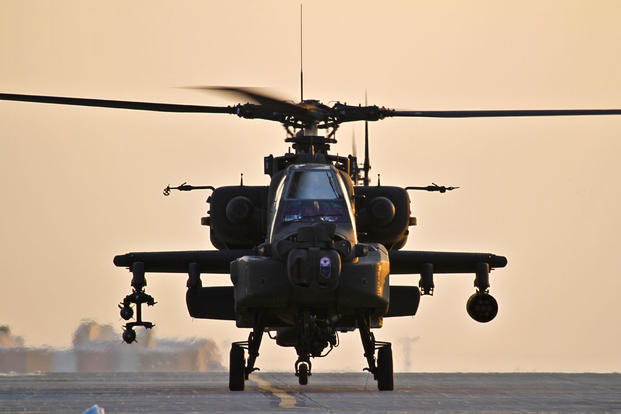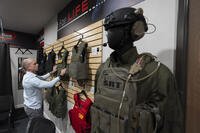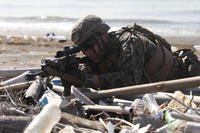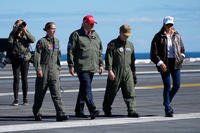U.S. Army aviation in Europe has been hit by the double whammy of downsizing that has cut Apache and Blackhawk fleets in half amid a growing range of threats from Russia and ISIS, a top commander said Tuesday.
The cuts in the rotary fleets of the 12th Combat Aviation Brigade in Europe have been accompanied by corresponding reductions in the number of personnel, from 4,000 to a sustained rate of about 1,000, said Col. Chris Waters, the brigade commander. Waters said he used to have seven battalions, and now has two.
As a result of the Army's controversial Aviation Restructuring Initiative, or ARI, combined with an overall downsizing, the Katterbach, Germany-based brigade has "less capability than we had before," Waters said at a roundtable session with defense reporters at the Pentagon.
"In my assessment, this has created an aviation deficit in EUCOM for rotary wing capability, and we're going about trying to figure out how to solve that deficit," he said, referring to European Command. "We're struggling to build readiness."
At the same time, the threats in Europe have increased with the Russian incursions in Crimea and eastern Ukraine, the Syrian refugee crisis and the heightened security levels following the Paris terror attacks claimed by the Islamic State in Iraq and Syria, or ISIS, Water said.
The number of AH-64 Apache attack helicopters in the 12th CAB has fallen from 48 to 24; UH-60 Black Hawks have decreased from 60 to 30 and CH-47 Chinooks from 12 to eight, Waters said. He said he once had 30 helicopters assigned to medication evacuation and now has six.
"I don't expect we're going to get that force structure back" as the Army continues to downsize, Waters said. The current plan to rotate units from the states through Europe to boost strength and the pledges of increased involvement by allies won't make up for the shortfall, he said.
"While the Army had to make decisions, the (threat) environment changed during that same time period, which is why we're sitting where we are today," he said. "There is no normal right now."
Waters echoed the frequent statements of his boss, Lt. Gen. Ben Hodges, commander of U.S. Army Europe, who has often noted that the U.S. maintained about 300,000 troops in Europe during the Cold War, and the Army now has about 30,000 stationed there. "We're trying to make 30,000 look like 300,000," Waters said.
Hodges was expected to outline his concerns in briefings at the Pentagon next week. One of those concerns was meeting the ramped up schedule for exercises in Europe with fewer numbers of troops.
Maj. Luke Chivers, Waters' chief aide, said the 12th CAB was involved in 51 joint exercises last year, and most recently concluded Exercise Trident Juncture 15 last month in Spain, which involved 36,000 troops from more than 30 nations, including Spain, Italy, Portugal, Canada, Norway, Germany, Belgium and the Netherlands.
--Richard Sisk can be reached at Richard.Sisk@military.com.




























